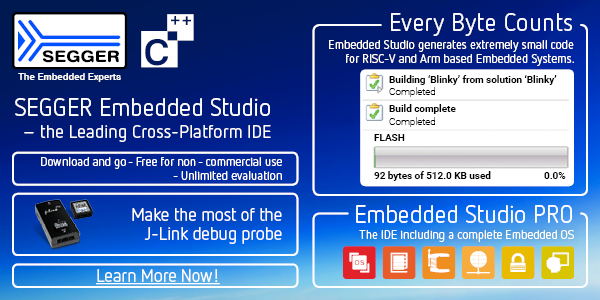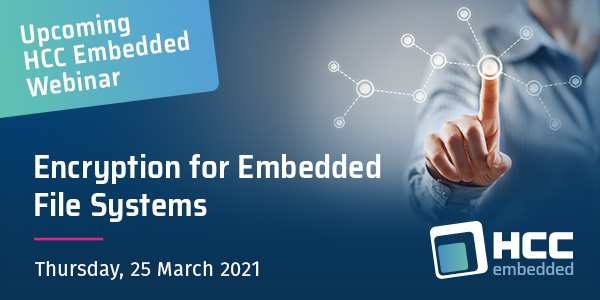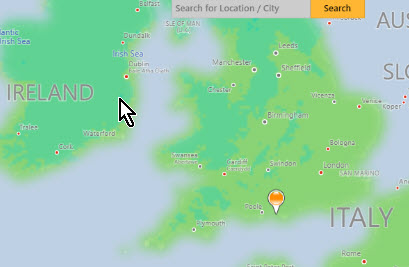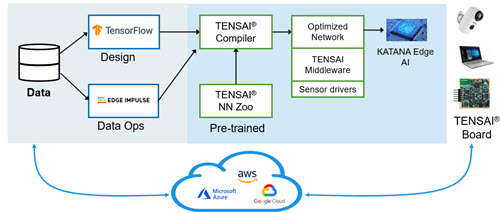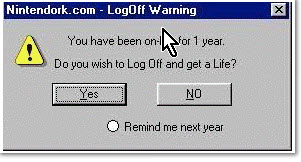|
||||||
You may redistribute this newsletter for non-commercial purposes. For commercial use contact jack@ganssle.com. To subscribe or unsubscribe go here or drop Jack an email. |
||||||
| Contents | ||||||
| Editor's Notes | ||||||
|
Tip for sending me email: My email filters are super aggressive and I no longer look at the spam mailbox. If you include the phrase "embedded muse" in the subject line your email will wend its weighty way to me. Congratulations to the Perseverance team for their successful Mars landing. This is a victory for embedded systems, without which the lander would never have had a chance. |
||||||
| Quotes and Thoughts | ||||||
"The dangers of not thinking clearly are much greater now than ever before. It's not that there's something new in our way of thinking, it's that credulous and confused thinking can be much more lethal in ways it was never before." Carl Sagan |
||||||
| Tools and Tips | ||||||
|
Please submit clever ideas or thoughts about tools, techniques and resources you love or hate. Here are the tool reviews submitted in the past. Two good articles about debugging hard faults on Arm processors are here and here. Both of those blogs (from Embedded Artistry and Memfault) are worth following. And don't miss Memfault's blog about using semihosting on Cortex M processors. This lets your target system use the I/O on your PC via the debugger. |
||||||
| Freebies and Discounts | ||||||
Courtesy of the folks at MagicDAQ, March's giveaway is one of their Python powered USB DAQ and compatible hardware testing module.
Muse readers can get a 10% discount (valid till the end of June) on these if they send an email to support@magicdaq.com and mention the Embedded Muse. Enter via this link. |
||||||
| Getting it Right | ||||||
How good is your code? Most of us have no quantitative idea. A few outfits measure bug rates, but, as been often observed, an apparent absence of bugs does not mean the code lacks defects. While safety-critical code is often better-tested, and sometimes better-designed, than average industrial software, testing cannot prove the absence of bugs. According to Adams, N.E "Optimizing preventive service of software products", IBM Journal of Research and Development, 28(1), p. 2-14, a third of all software faults take more than 5000 execution-years to manifest themselves. That's encouraging for those of us not planning to challenge Methuselah, but graphically illustrates the inadequacy of testing. Some operating systems are certified to extremely-high levels of reliability and/or security. To my knowledge none have been completely proven using the most rigorous formal methods (some, like Green Hills' Integrity, certified to EAL6+ against a particular protection profile, come close).However, NICTA's Secure Embedded L4 microkernel has been completely proven correct using formal methods. That's quite an achievement. But more interesting is the stunning cost required to make the proofs. The OS comprises 9,300 lines of code, of which 7,500 have been verified. The cost of verification: 25 to 30 person years of work! At a loaded cost of $200k/person year, that's over $5m, or about $700 per line of code. Since most firmware runs $20-40 per line of code (this covers the entire cost of the project), formal verification is twenty times the cost of writing the stuff in the first place. Actually, $700/LOC is cheaper than one might think. Green Hills apparently spent about $1000/LOC to achieve their EAL6+ validation, which is not as strong as a proof as what NICTA claims. NICTA themselves believe EAL6 certification would run about $10,000/LOC. That's quite a range; even at the low end it's gobs of cash. They found 144 bugs while formally proving the OS. That's about a 2% rate, which suggests very little testing was used prior to the proof. So- how good is your code? How do you ensure it's close to being right? |
||||||
| On Engineering | ||||||
Steve Johnson had some thoughts about the profession:
James Fowkes wrote:
|
||||||
| Is the Customer Right? | ||||||
Vlad Z had a take about my linking to a Karl Wiegers post:
My dad always drilled into us that we should always do the best job we can. It took me a long time to realize he was wrong. If I'm woodworking on a yacht everything must fit perfectly, but in constructing a house it really doesn't matter if the studs are off by a few mm. Or even cm. Throwaway test or experimental code often doesn't need the care that needs to go into safety-critical software. So a better moral is: Do the best that the job requires. And Vlad's comments remind me of a sales guy I worked with while consulting decades ago. He was an ex-engineer, ex apparently because he really wasn't much good at engineering. But we'd visit a customer who would start describing his problem, and before getting halfway through this fellow would jump in with all kinds of technical "solutions." "We'll use so and so CPU, toss in this much memory, ..." Needless to say he closed few deals. And ticked off a lot of people, yours truly included. |
||||||
| A Loaded Bookshelf | ||||||
Responding to the last issue's suggested book list, Mike Teachman wrote:
William Grauer suggested a classic:
And Duane Mattern had a couple of suggestions:
|
||||||
| Failure of the Week | ||||||
From Neil Peers. Where is Italy?
|
||||||
| This Week's Cool Product | ||||||
Machine learning is all the rage, and Eta Compute is deeply involved. They are bringing ML to the edge, now partnering with Synaptics. Their vision is to support extremely low-power MCU applications, like detecting that X number of people are in a room.
Note: This section is about something I personally find cool, interesting or important and want to pass along to readers. It is not influenced by vendors. |
||||||
| Jobs! | ||||||
Let me know if you’re hiring embedded engineers. No recruiters please, and I reserve the right to edit ads to fit the format and intent of this newsletter. Please keep it to 100 words. There is no charge for a job ad. |
||||||
| Joke For The Week | ||||||
These jokes are archived here.
|
||||||
| About The Embedded Muse | ||||||
The Embedded Muse is Jack Ganssle's newsletter. Send complaints, comments, and contributions to me at jack@ganssle.com. The Embedded Muse is supported by The Ganssle Group, whose mission is to help embedded folks get better products to market faster. |




